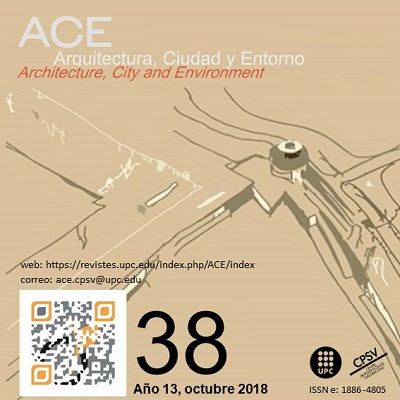Policentrismo y jerarquía de localidades de la región “Altos Sur” de Jalisco, 2010
DOI:
https://doi.org/10.5821/ace.13.38.5360Palabras clave:
Sistema de ciudades, estructura funcional, densidad poblacional, dispersión poblacionalResumen
Objetivo
Analizar el sistema jerárquico de las localidades de la región Altos Sur en Jalisco México, como resultado de la aplicación de la Metodología para la concentración y dispersión de la población mexicana a partir del Modelo Policéntrico.
Metodología
Comparación entre la clasificación tradicional de localidades por tamaño de localidad del Instituto Nacional de Estadística y Geografía (INEGI), institución del país que ofrece información oficial sociodemográfica periódica, y la derivada de la Metodología para la concentración y dispersión de la población mexicana a partir del Modelo Policéntrico para enfatizar la ventaja cualitativa que éste último ofrece para investigaciones en ámbitos urbano-rurales al dar un peso relativo a las localidades por sus características y estructura funcional.
Conclusiones
El método jerárquico determinó las centralidades potenciales de la región, entendiendo que un centro/centro principal o unidad morfológica es capaz de proporcionar empleo y servicios especializados de manera endógena, tanto a su población como a los que la rodean. Se trata, por tanto, de un punto que actúa como nodo en la matriz territorial, capaz de atraer flujos para el consumo de bienes y la demanda de la población.
Originalidad
La Metodología para la concentración y dispersión de la población mexicana basada en el modelo policéntrico en comparación con la jerarquía tradicional de localidades en México logró exponer un sistema de ciudades que demarcaba las influencias sociales, políticas y económicas entre las localidades de la región de la Sierra Sur de Jalisco, al mismo tiempo que definía los centros de población que por su masa crítica espacialmente concentrada tienen el potencial de representar una estructura jerárquica para exponerlos, fortalecer su actividad económica o apuntalarlos, a fin de mantener su desarrollo económico local.
Publicado
Número
Sección
Licencia
COPYRIGHT
El contenido de los artículos y los comentarios en ellos expresados son responsabilidad exclusiva de sus autores, y no reflejan necesariamente la opinión del comité editor de la revista. Los trabajos publicados por ACE pueden reproducirse bajo la licencia CC-BY-NC-ND 3.0 ES más información http://creativecommons.org/licenses/by-nc-nd/3.0/es/
Lo que implica que las personas autoras sólo retienen y mantienen los derechos de Copyright dentro de las limitaciones incluidas en la licencia anterior.





































